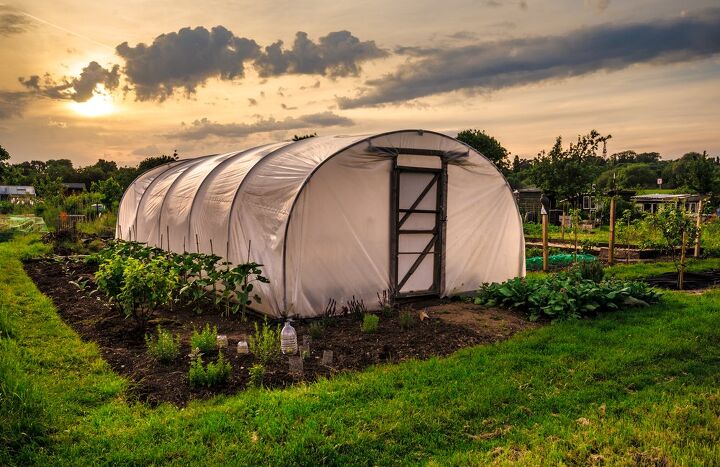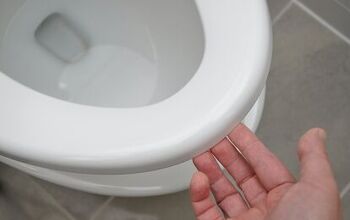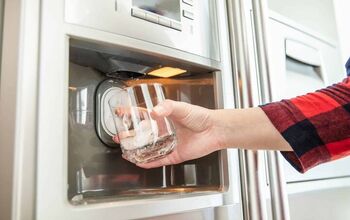Clear Vs. White Greenhouse Plastic: Which One Is Better?

Greenhouses allow us to continue growing our plants no matter the time of year. We are no longer beholden to the whims of Mother Nature because we can control the conditions for our crops.
If you don’t have a greenhouse already, you may be interested in constructing one now. While doing so, you will have to decide what kind of covering to use. Clear and white plastic coverings are among the options available
Clear plastic coverings are capable of providing direct light and that helps seeds germinate and sprout faster. Meanwhile, white or opaque plastic coverings provide diffused light. That diffused light is preferable if you want to promote balanced plant growth inside your greenhouse.
Your choice of plastic covering is going to have a major impact on what your greenhouse can do. Learn more about the choices available to you by reading on.
Do You Need Landscaping Services?
Get free, zero-commitment quotes from pro contractors near you.

Choosing between a Clear or White Plastic Covering for Your Greenhouse
Greenhouses provide homeowners with the opportunity to grow their favorite crops throughout the year. You can grow tomatoes, carrots, and several other crops inside your greenhouse and bump up your food supply that way. Different kinds of flowers can also be grown inside the greenhouse if you’re looking for more decorative flourishes.
Even if it will cost you some money to build your own greenhouse, they will pay for themselves soon enough. To make the most out of your greenhouse, you need to choose its covering carefully.
Plastic coverings are commonly used for greenhouses but they don’t all do the same thing. For instance, there is a significant difference between clear and white plastic coverings.
Clear Plastic Covering for Your Greenhouse
Clear plastic coverings are known for providing direct sunlight. You can make good use of that.
Direct sunlight is ideal for the purposes of germinating seeds and getting them to sprout. All the heat coming from the direct sunlight does a great job of raising the soil’s temperature. That, in turn, stimulates the faster development of the seeds.
Getting the seeds to grow faster is really helpful if you need starter crops. Your seedlings should be ready quickly and that gives you a few options.
With the seedlings having sprouted, you can now continue to grow them inside your greenhouse. That may not be best for your plants though. The direct sunlight can lead to the plants growing in an uneven manner. Certain parts of the plants that are more exposed to the sunlight may grow at a faster rate. You do not want that to happen.
It’s best to use direct sunlight for the purposes of stimulating the seedlings but leaving it at that. If your plan is to continually grow your plants inside the greenhouse, you will need a different kind of plastic covering.
White Plastic Covering for Your Greenhouse
White plastic coverings are often opaque. Because they’re opaque, white plastic coverings provide diffused light instead of direct light. Why is that distinction important? Well, it matters because it affects how the plants inside the greenhouse will grow.
Although diffused light is not as intense as direct light, it remains fully capable of helping your plants. The intensity of the sunlight is not the determining factor of how helpful it is to plant growth after all.
As long as the correct type of light is passing through, your plants will grow. That type of light can easily pass through the opaque covering even if our eyes prevent us from seeing it.
It is important to point out here that you’re getting that necessary type of light from both direct and diffused sunlight. That’s not the reason why you’re choosing a white plastic covering. The white plastic covering is important because of how it disperses the light.
Dispersing the light means the plants inside the greenhouse all receive an equal share of it. The plants don’t have to grow in certain directions just to get that sunlight.
Diffused sunlight also hits the plants from different spots. That will allow the plant to grow evenly. The plants inside your greenhouse will grow stronger from that kind of exposure.
Use a white plastic covering if you intend to keep the plants inside your greenhouse throughout the year. The white plastic covering will provide the kind of light that your plants will need long-term.
Semi-Diffused Covering for Your Greenhouse
Homeowners are not limited to just clear or opaque plastic coverings. There is a kind of compromise option available as well. The option in question is known as a semi-diffused covering.
As you’ve probably guessed already, semi-diffused coverings are specially designed so they offer the benefits of both clear and opaque coverings. You can rely on semi-diffused coverings to provide both direct and diffused sunlight.
Semi-diffused plastic coverings are terrific additions to any greenhouse. They can be somewhat difficult to find though.
Other Qualities to Consider When Selecting a Plastic Greenhouse Covering
The clarity of the plastic covering going over your greenhouse is not the only factor you should consider. Listed below are the other qualities you need to look at while choosing a plastic covering for your greenhouse.
Thickness of the Plastic Covering
The thickness of your plastic covering is going to directly impact its longevity. Plastic coverings for greenhouses are usually available at three, four, and six millimeters thick.
The coverings that are six millimeters thick are the ones that last longest. They will remain in good condition for multiple years. The thinner coverings are typically only good for one year.
Does that mean that you should pick up a six-millimeter plastic covering? You shouldn’t automatically default to that.
You may want to keep your options open after all. Change what your greenhouse is capable of by using a different plastic covering. Going with a thinner covering makes sense if that’s what you want to do.
Number of Layers
Consider how many layers of plastic covering you want to install on your greenhouse. You can opt to install one or two layers of plastic covering.
A single layer of plastic covering is usually good enough. It should be strong enough to withstand the wind and also offer some insulation.
Two layers of plastic covering are better if you live in a windy area. They are less likely to tear even if a strong breeze passes by. Two-layer coverings also offer more insulation.
Protection from Ultraviolet Rays
Your greenhouse is going to be on the receiving end of the sun’s harsh rays on a consistent basis. It needs adequate protection from ultraviolet radiation if it will last. Keep that in mind when you’re choosing a plastic covering for your greenhouse.
Seek out the plastic coverings that have been UV-certified. The ultraviolet protection those coverings feature may come in the form of a glaze or an additional coating.
Glazes are preferable because they are already stuck to the material itself. There’s no danger of them coming off. You can’t necessarily say the same thing about that exterior coating.
What Are the Types of Plastic Used to Create Greenhouse Coverings?
There are two different types of plastic that are often used as greenhouse coverings. Those are polycarbonate and polyethylene.
Polycarbonate Coverings
Polycarbonate coverings often provide direct light because they are clear. They possess decent durability, but they are prone to getting scratched up. You can find different types of polycarbonate coverings. They vary in terms of how many layers they possess.
The polycarbonate coverings with multiple layers are capable of absorbing plenty of force from external sources. They can also diffuse light and disperse it evenly throughout your greenhouse.
Polyethylene Coverings
Polyethylene is the material you should use if you want a semi-diffused covering. Choose them if you want to use your greenhouse all throughout the year. The biggest downside to polyethylene is how prone to damage it is. It can tear easily and any weight on top of it can cause it to sag permanently.
You’re almost forced to get polyethylene covers that have multiple layers if you’re using them on your greenhouse. Go with a thin polyethylene covering and it could wind up being badly damaged pretty quickly.
Do You Need Landscaping Services?
Get free, zero-commitment quotes from pro contractors near you.

Related Questions
How Do You Keep a Greenhouse Warm?
Sunlight is not always abundant throughout the year. That could lead to your crops not receiving enough heat.To remedy that issue, consider adding some insulation to your greenhouse. Use items such as bubble wrap, plastic bottles, or tarps to keep your greenhouse sufficiently insulated.Adding a compost heap to your greenhouse will also help if you need insulation. Place the compost heap in the middle of the room to distribute the heat evenly.You also have the option of using a space heater to warm up your greenhouse. Look for space heaters designed especially for greenhouses so your plants receive adequate warmth.
What Fruits and Vegetables Can You Grow inside a Greenhouse?
All kinds of fruits and vegetables can be grown inside a greenhouse. You can go for cucumbers, melons, peppers, tomatoes, spinach, eggplants, carrots, and so many more crops. Once you get used to growing your own crops inside a greenhouse, you may never have to shop for produce again.

Gary Evans is passionate about home improvement. He loves finding out how to make improvements in the easiest, most practical, and most affordable ways. Upgrading his home kitchen is one of his ongoing hobbies. Gary is also a long-time content creator and enjoys spending his free time tending to his hydroponic vegetable garden.
More by Gary Evans














![The 5 Best Angle Grinders – [2022 Reviews & Buyer's Guide]](https://cdn-fastly.upgradedhome.com/media/2023/07/31/9071326/the-5-best-angle-grinders-2022-reviews-buyer-s-guide.jpg?size=350x220)












